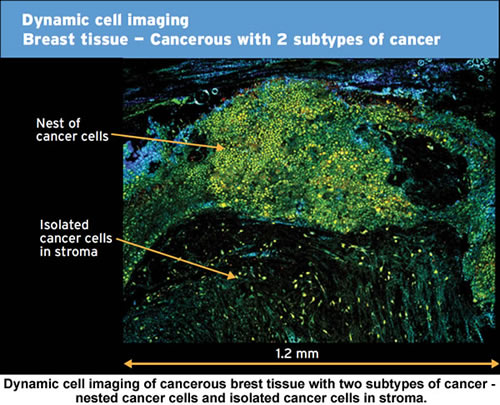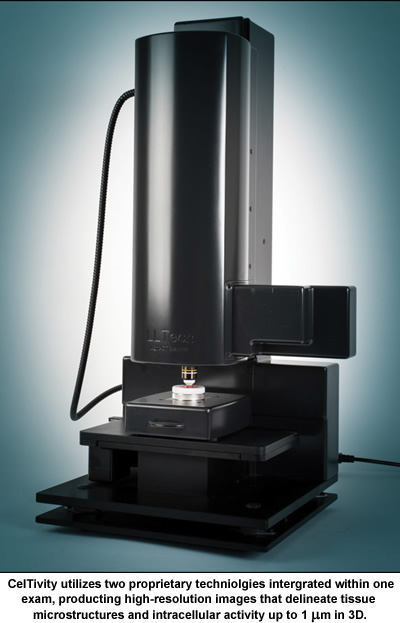|

Fighting Cancer with CelTivity & Interferometer
Vibration Isolation

Inadequate real-time
tissue assessment of biopsies from different cell types, like cancer cells,
immune cells, granuloma, and others, forces proceduralists, such as
bronchoscopists and radiologists, to choose between intraprocedural partial
tissue adequacy assessment, rapid on-site evaluation (ROSE), or sending tissue
samples for full pathology review. Neither truly answers the question, “Do
we have enough cells to submit to pathology for the best chance of a conclusive
diagnosis?” This can lead to prolonged delay for patient results, the need
for a redo procedure, and potential delays for treatment options for the
patient.
Consider lung biopsies, which are excised from patients and
then sent to the laboratory for advanced cancer testing. These tests require
that patients have an adequate amount of high-quality tissue to conduct
advanced tests such as EGFR, kRas, or PD-1/PDL-1. To collect these biopsies,
transthoracic needle biopsy (TTNA) is commonly used, which requires a needle to
be inserted through the chest wall from outside the body. The risk of a
collapsed lung (pneumothorax) can result in an average of 20 percent of
procedures. Navigational bronchoscopy has emerged as a technology to collect
lung biopsies with a lower risk of complications.
A better solution
would be to assess tissue adequacy intra-procedurally, to interrogate and image
the biopsy in its entirety, to determine: Do we have the tissue? What exactly
are we looking at (cancer cells, immune cells, granuloma)? And, do we have
enough cells to submit to pathology to gain the best chance of a conclusive
diagnosis? The results would allow clinicians intraprocedural identification
and interpretation to properly assess tissue samples for adequacy.

....
Vibration
Isolation
Because CelTivitys technologies function at the micron level,
vibration isolation is critical to maintaining the systems highest level of
operation, explaiins Le Conte de Poly. Footfall from someone walking by, the
closing of doors, HVAC units operating, or elevators in motion create
low-frequency vibrations that can influence FFOCT and DCI
imaging.
Consequently, Celtivity is supported by vibration isolation
designed to more thoroughly cancel out low-frequency vibrations, says Le Conte
de Poly. For this purpose, negative-stiffness vibration isolation was selected
because of its high-performance capability, and ease of adaptability to
hospital and laboratory environments.
Full
article...
|
